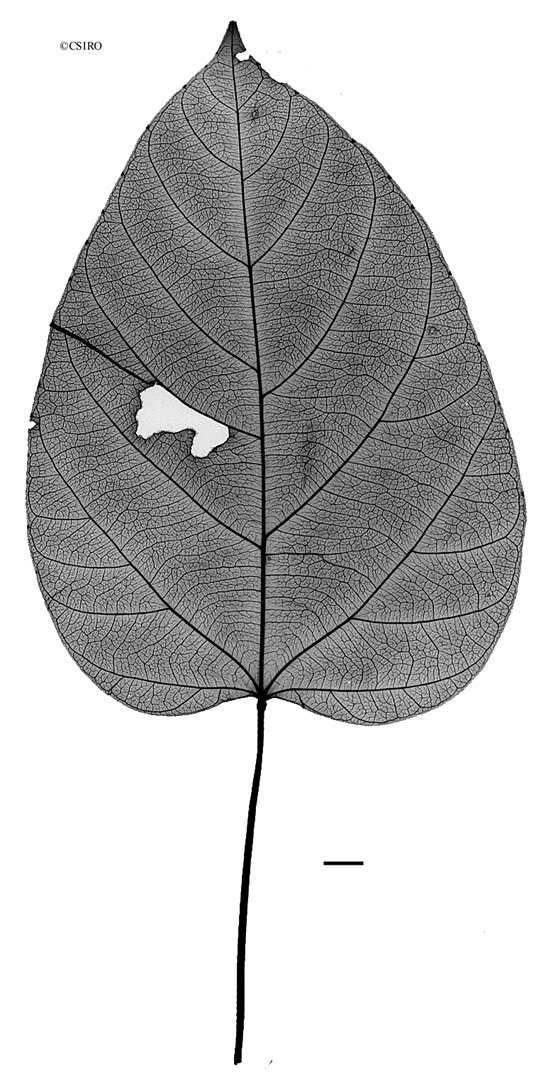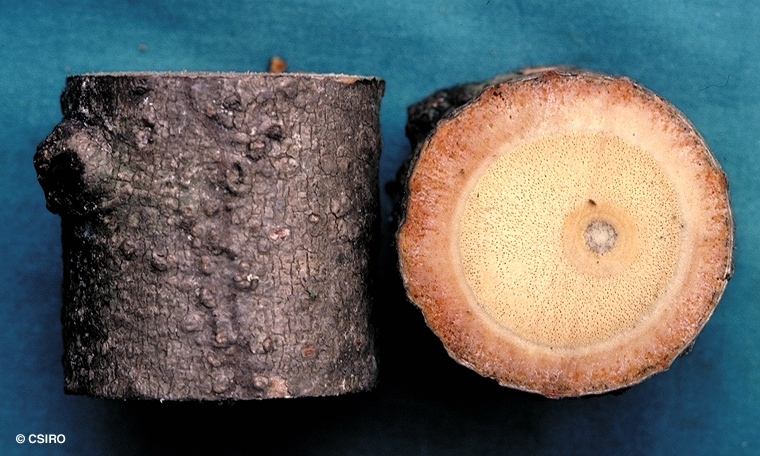Australian Tropical Rainforest Plants - Online edition
Omphalea papuana Pax & K.Hoffm.



Pax, F.A. & Hoffmann, K. (1914) Das Pflanzenreich Heft 63 63: 419. Type: Papuasische Provinz: Neu-Mecklenburg, Namatanai, bei Malabuo (Peekel n. 131!).
Cut twigs produce a watery exudate which turns pink on exposure. Leaf blades about 13-25 x 9-17 cm, petioles about 6.5-14.5 cm long. Two glands usually visible, one on either side of the petiole just prior to its junction with the leaf blade. These glands are particularly obvious on young expanding leaves. Stipules caducous, about 1.5 mm long. Tendrils are modified inflorescences. Very small oil dots visible with a lens in young leaves.
Inflorescence a much-branched panicle with male flowers greatly outnumbering female flowers. Leaf-like bracts about 15-25 x 3-5 mm, present where inflorescence branches arise. Male flowers: Flowers about 3 mm diam., not opening widely. Tepals concave on the inner surface, fleshy, about 3 x 2.5 mm. Anthers fused into a head about 1 mm diam. on a staminal column about 1.5 mm long. Disk large, surrounding the staminal column. Female flowers: Flowers about 5-6 mm diam. Sepals variable, about 1.5-2.5 mm long. Ovary obpyriform, about 3 x 2.5 mm. Style absent. Stigmas 3, inserted in the style in an apical cavity.
Fruits probably larger than 6 x 6 cm. Seeds globose, about 0.25 x 0.25 cm long. Testa covered with a pale brown skin or parchment-like layer. Surface of the testa wrinkled with raised and depressed sections. Cotyledons thick and fleshy, much wider and longer than the radicle. Radicle much shorter and narrower than the cotyledons.
About 4 cataphylls of increasing size produced before the first true leaves. First true leaf lanceolate, three-veined at the base, margin slightly sinuate with 1 or 2 gland-like rounded teeth on each side. Midrib raised on the upper surface. Second, third and fourth leaf deeply trilobed, apices acuminate. Two raised glands present on the side or +/- on the upper surface of the petiole near its junction with the leaf blade. Stipules about 0.8 mm long. At the tenth leaf stage: leaf blade lobed (3-lobed?). Two glands present at the base of the leaf blade one on each side of the petiole. Stipules small, less than 1 mm long. Seed germination time 32 days.
Occurs in CYP. Altitudinal range quite limited, from near sea level to about 50 m. Grows in gallery forest and rain forest. Also occurs in New Guinea.
The seeds of this species comprise a significant part of the drift seed aggregation in the south-west Pacific. Such seeds were thought to belong to a species of Aleurites until quite recently. Fortune Hopkins (2000).





